A New Probabilistic Model to Evaluate the Age and Erosion Rate of Young Sedimentary Rock on Mars
- University of Chicago, Chicago, USA (anli7@uchicago.edu)
Abstract: The Medusae Fossae Formation (MFF) is an enigmatic sedimentary unit in the equatorial region of Mars with an uncertain formation process and age [1, 2]. Due to the heavily wind-eroded surface, it is difficult to determine the age of the MFF using existing crater count data and a one-parameter model based on the crater size-frequency distribution function [2, 3]. In our study, we used Context Camera (CTX) crater counts of 14 sites near the Medusae Fossae Formation, and other young equatorial units, to create a new two-parameter probabilistic model that estimates both age and erosion rate (β) by treating cratering as a random Poisson process. Our model predicts that the Central Medusae Fossae Formation and the top of Aeolis Mons (otherwise known as Upper Mount Sharp) have older ages (>1.40 Ga) and lower erosion rates (<650 nm/a), whereas East Medusae Fossae, Far East Medusae Fossae, Aeolis Planum, and Eastern Candor have younger ages (<0.740 Ga) and higher erosion rates (>740 nm/a). In addition to estimating ages consistent with previous studies, our new model also provides a better picture of how locations with higher rates of erosion are predicted to have younger best fit ages, and MFF locations with lower rates of erosion are predicted to have older best fit ages.
Methods and Results:
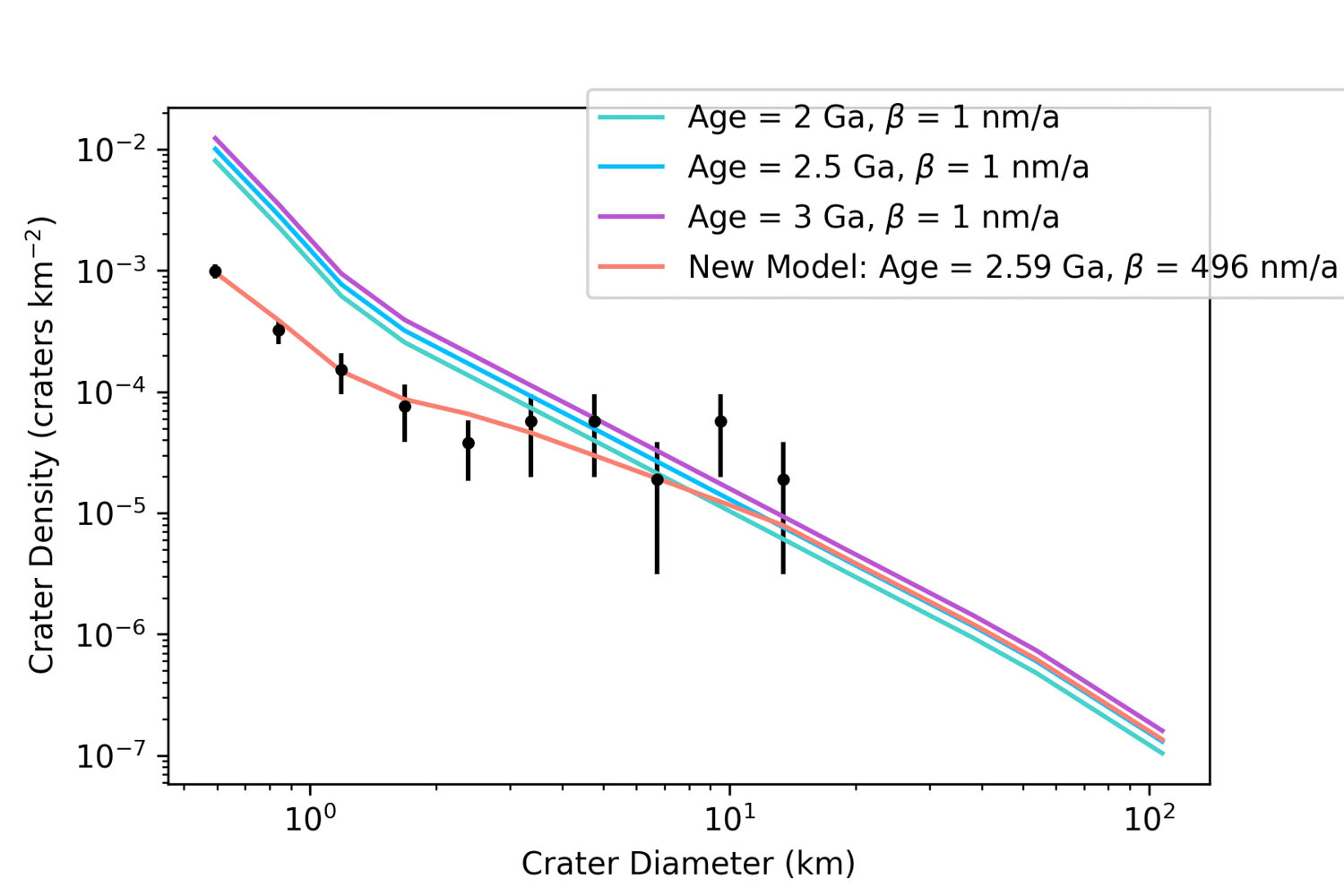
Fig 1. Crater density distribution (black points) corresponds to site 4B: Central Medusae Fossae 2B. On the left, we see that all three lines with negligible rates of erosion (β = 1 nm/a) overestimate the crater density for bins with small crater diameters, whereas including erosion rate in our new two-parameter model allows for a better fit.
We developed a new two-parameter model that uses crater count data to estimate a best fit erosion rate and age for each site. For sedimentary rocks on Mars, one-parameter (age-only) models typically predict an overabundance of small craters [4], as seen in Fig. 1. Our study region included 14 sites with boundaries based on USGS geologic map [5] and radargrams [6] (Fig. 2). We used manually counted craters within each of the 14 sites and divided the craters into 16 bins with crater diameters 0.5-128 km (based on [7]).
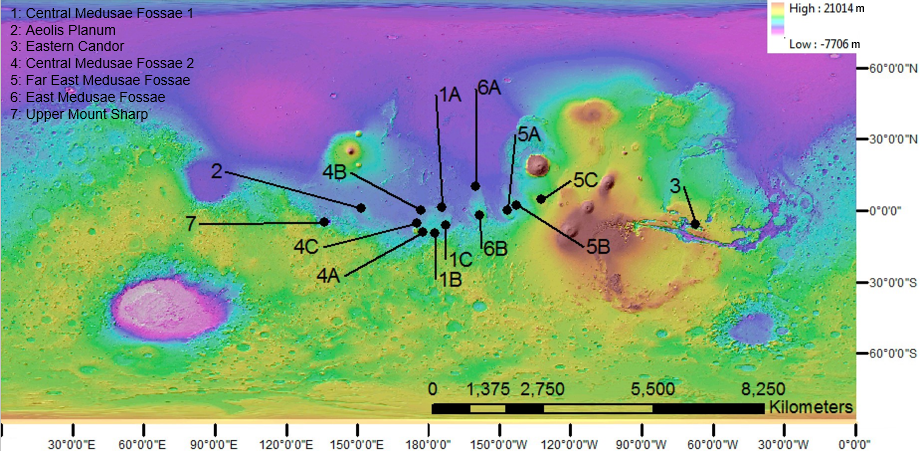
Fig. 2 Location of all 14 sites including Medusae Fossae Formation, Upper Mount Sharp, and Eastern Candor. Colors indicate MOLA topography in meters.
By contrast to [8], who created a two-parameter model using a Monte Carlo method, we treat cratering as a random Poisson process in order to apply a probabilistic model to find the best fit age and erosion rate β. This model considers each region’s surface area and crater size-frequency distribution to fit an expected number of craters μ, with erosion and without erosion, to find the most probable age and erosion rate.
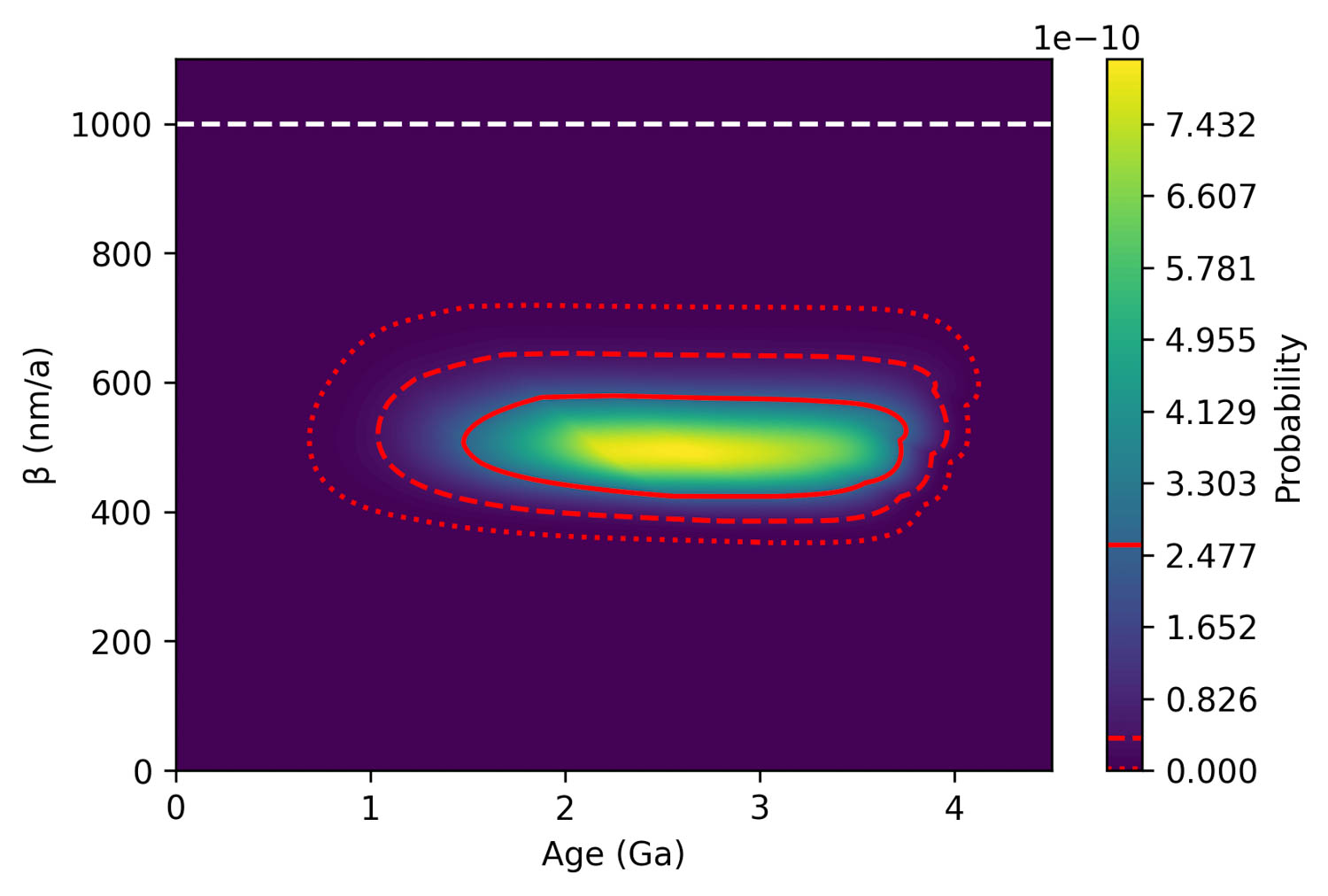
Fig. 3 Probability contour plot for site 4B Central Medusae Fossae 2B. The red solid, dashed, and dotted lines represent the 1σ, 2σ uncertainty region, and 3σ uncertainty regions. The dashed white line at 1000 nm/a indicates the minimum erosion rate needed for metastable water ice at depths shallow enough to be detected by Gamma Ray Spectroscopy (GRS) or Neutron Spectroscopy (NS). The value of 1000 nm/a is based on Figure 12 from [11].
Taking the model’s predicted best fit age and erosion rate multiplied by each site’s area, we found maximum volume and plotted a simple perspective on each site’s volume history (Fig. 4). To do this, we used the global sedimentation rate compilation of [10], who infer sedimentation rates of 10–100 µm/a for young sedimentary rocks. This is >10 times faster than our model-fit erosion rates, so we approximate sedimentation rate as instantaneous and treat deposition as one continuous interval before erosion occurs in a following continuous interval to reach present-day volume for each site.
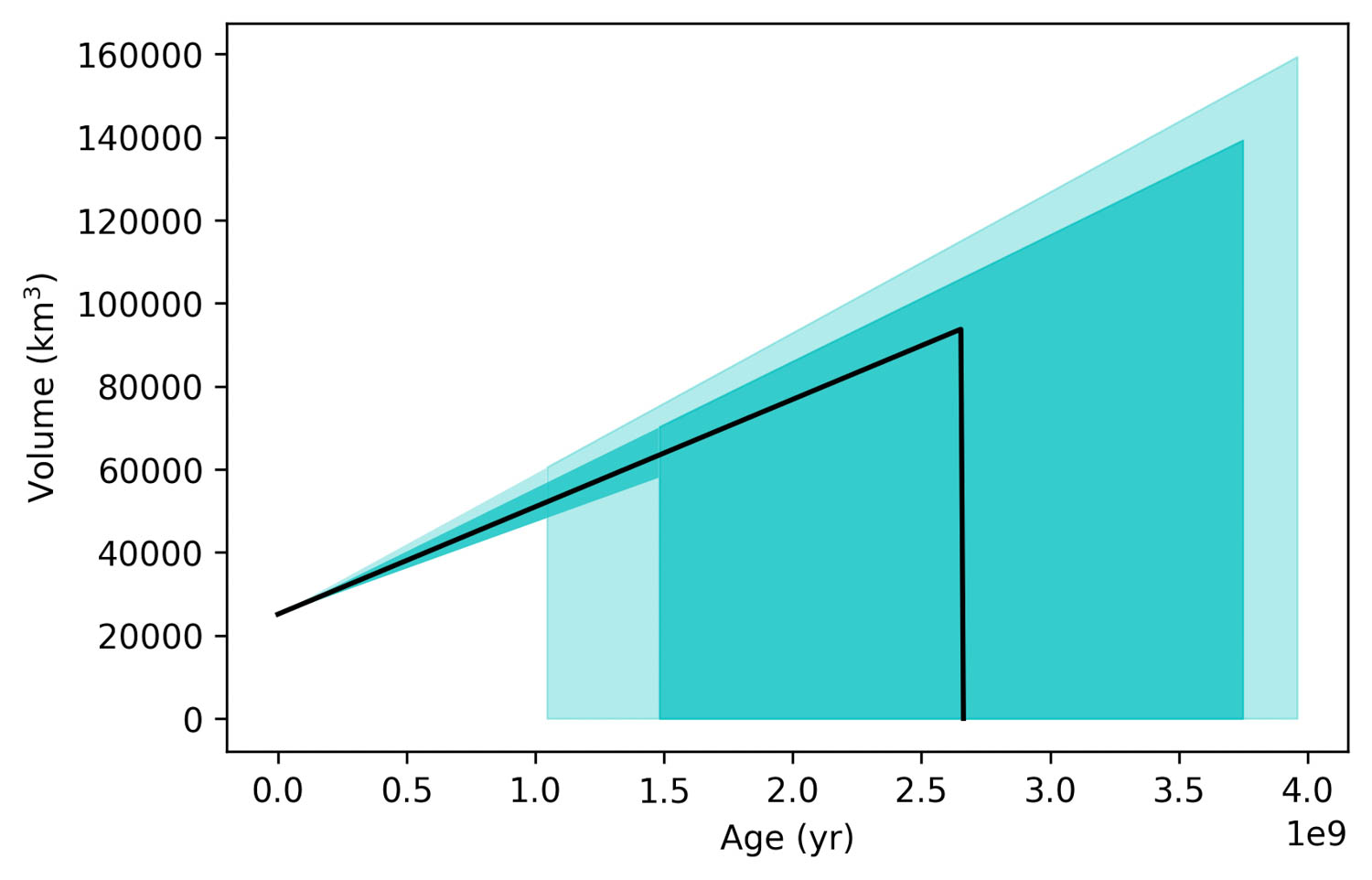
Fig. 4 Mound volume history for site 4B: Central Medusae Fossae 2B. The black line in each plot represents the cumulative best fit volume (km3) for each region. The lighter colored cyan section represents the 2σ region and the darker cyan section represents the 1σ region.
Discussion and Conclusions:
As seen in Fig. 5, while Central Medusae Fossae and Upper Mt. Sharp had best fit older ages (>1.40 Ga) and best fit lower erosion rates (<650 nm/a), East Medusae Fossae, Far East Medusae Fossae, Aeolis Planum, and Eastern Candor all had younger ages (<0.740 Ga) and higher erosion rates (>740 nm/a).
The regions with less well-defined β fits (with wider error regions) were Aeolis Planum, Eastern Candor, Far East Medusae Fossae A and C, and East Medusae Fossae B. However, four out of five of these regions had β error regions predominantly above 1000 nm/a (excluding Eastern Candor) and thus have the highest likelihood for water ice detection by GRS/NS. As a result, we recommend further investigation of these four sites due to their potential implications for in-situ resource utilization (ISRU).
Our two-parameter model using crater counts offers a more detailed understanding of sedimentary Martian surfaces with both age and β estimates compared to prior models. While the model estimates age and β values consistent with previous studies, the model estimated a much more precise β than age. Future work should focus on methods for better constraining age. As the Curiosity rover approaches Upper Mount Sharp, we will also have an opportunity to better evaluate our age and erosion rate estimations.
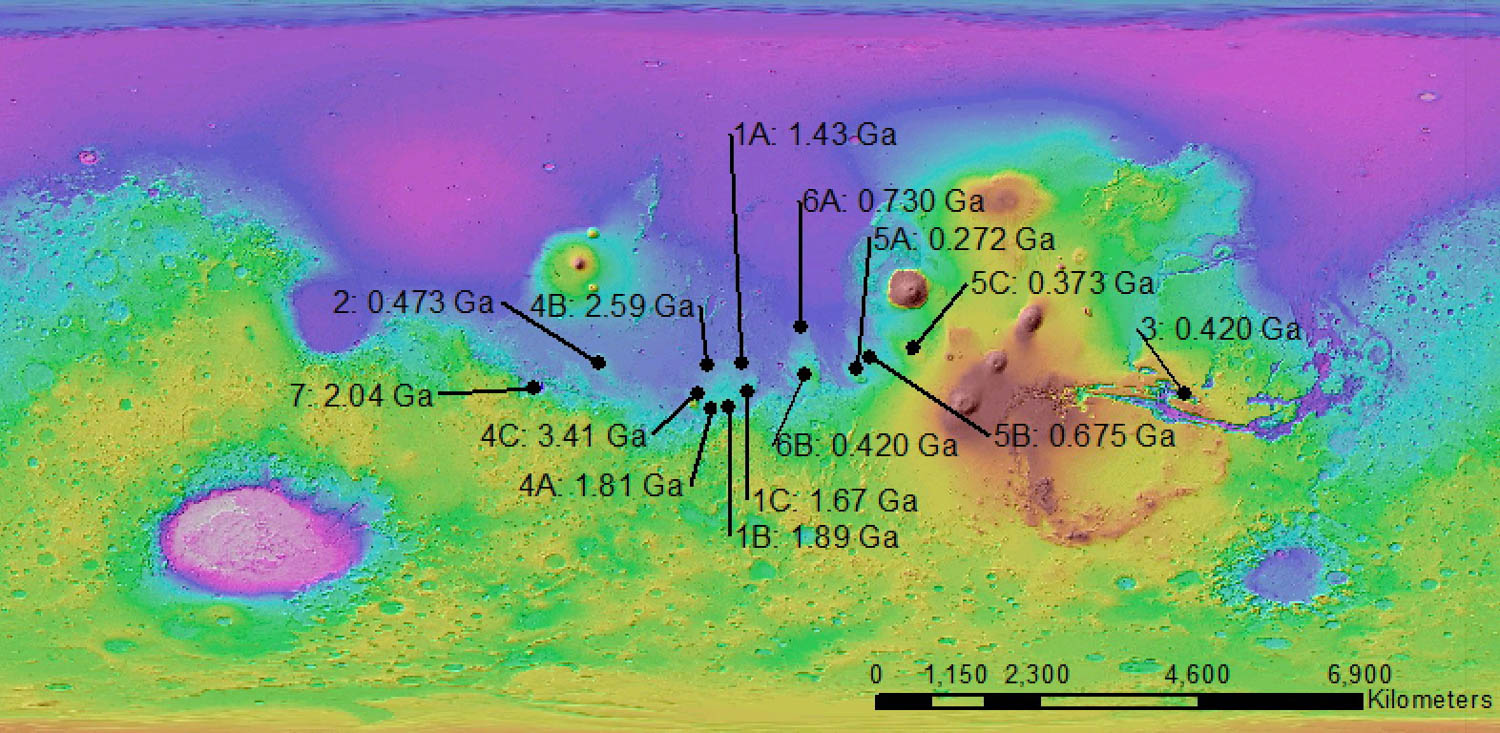
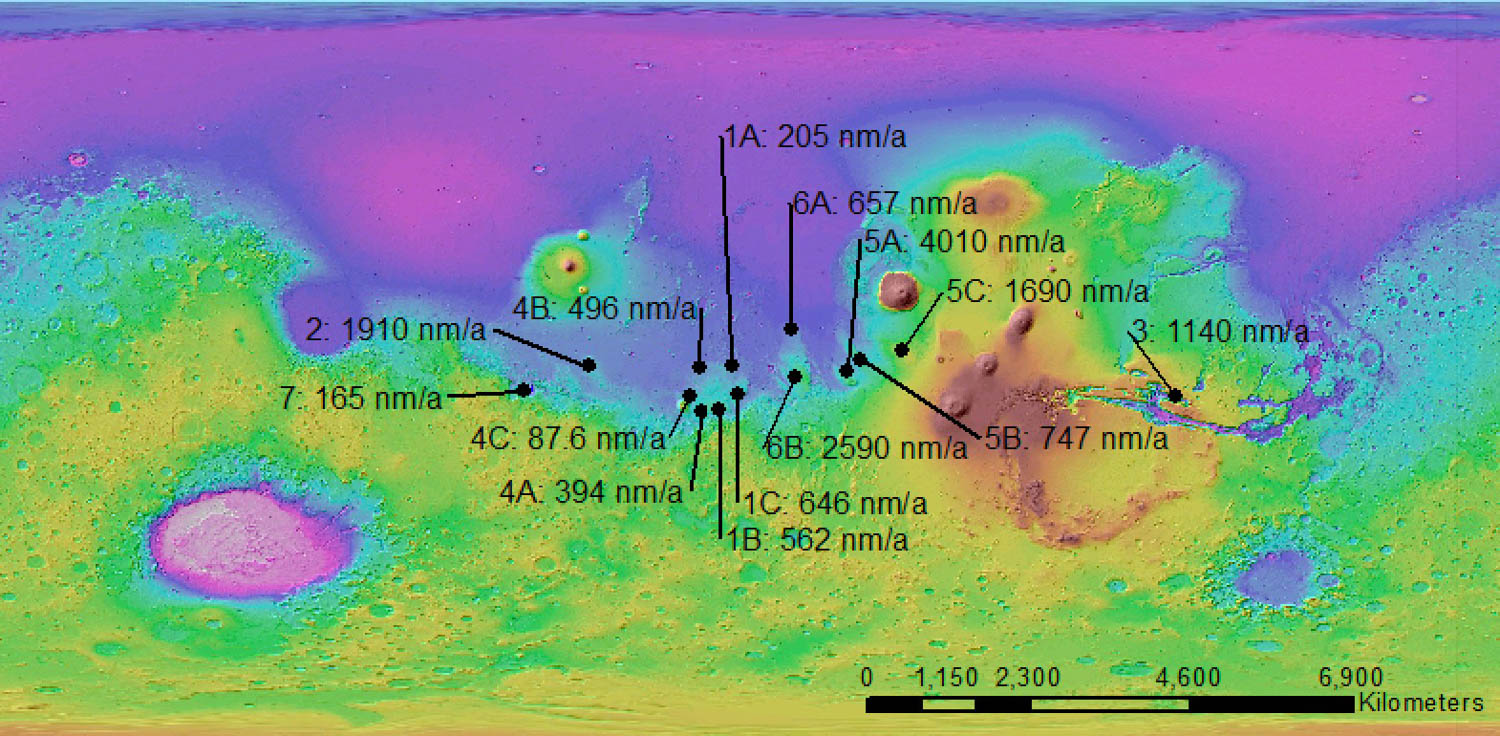
Fig. 5. Global maps of Mars with 14 study sites labeled with the model's best fit ages and β values.
Acknowledgments: We thank Katarina Keating for crater count data, as well as Daniel Fabrycky and Michael Foote for discussions.
References: [1] Kerber & Head 2010 Icarus. [2] Kerber et al. 2011 Icarus. [3] Tanaka et al. 2000 Icarus. [4] Kite and Mayer 2017 Icarus. [5] Tanaka et al. 2014 USGS SI Map 3292. [6] Orosei et al. 2017 JGR: Planets. [7] Michael 2013 Icarus. [8] Palucis et al. 2020 Icarus. [9] [10] Lewis and Aharonson 2014 JGR: Planets. [11] Hudson et al. 2007 JGR: Planets.
How to cite: Li, A. and Kite, E.: A New Probabilistic Model to Evaluate the Age and Erosion Rate of Young Sedimentary Rock on Mars, Europlanet Science Congress 2021, online, 13–24 Sep 2021, EPSC2021-462, https://doi.org/10.5194/epsc2021-462, 2021.

